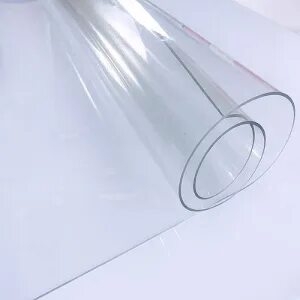Transparent Plastics Market Growth and Demand: 2023, Current Industry Trends and Research Methodology by 2030Posted by Pearl Smith on April 21st, 2023  Transparent plastics are a type of plastic material that allow light to pass through them, making them see-through or translucent. They are commonly used in a wide variety of applications, including packaging, automotive parts, medical devices, electronic displays, and more. Some examples of transparent plastics include: Polycarbonate: a strong and durable plastic commonly used in applications where impact resistance is important, such as in safety glasses and windshields. Acrylic: a lightweight and versatile plastic that is often used in displays, signage, and lighting fixtures. PET (Polyethylene terephthalate): a clear, lightweight, and recyclable plastic commonly used in food and beverage packaging. PVC (Polyvinyl chloride): a versatile plastic that is often used in construction materials, such as windows and doors. SAN (Styrene Acrylonitrile): a plastic that combines the clarity and stiffness of polystyrene with the chemical resistance of acrylonitrile, making it suitable for applications such as medical devices and laboratory equipment. The market size for transparent plastics was valued at US$ 161.2 billion in 2022, and it is expected to reach USD 214.91 billion by 2030, growing at a CAGR of 3.66% during the forecast period. Key companies covered as a part of this study include Dow Inc., Covestro AG, Eastman Chemical Company, SABIC, Arkema S.A., Mitsubishi Chemical Corporation, Evonik Industries AG, Sumitomo Chemical Co., Ltd., Teijin Limited, and LG Chem Ltd. The growth of the transparent plastics market can be attributed to several factors, including the increasing demand for transparent plastics in packaging, automotive, construction, and electronics industries. Transparent plastics are widely used in the packaging industry due to their durability, transparency, and lightweight nature. Additionally, the increasing use of transparent plastics in the automotive industry for windows, windshields, and other components has further boosted the demand for these materials. Furthermore, the rise of the electronics industry and the growing demand for electronic devices such as smartphones, tablets, and laptops has also led to an increased demand for transparent plastics in the manufacture of electronic components and displays. The demand for transparent plastics has been increasing steadily over the years, and it is expected to continue to grow in the future. Transparent plastics are used in a wide range of applications, including packaging, automotive, construction, electronics, medical devices, and more. In the packaging industry, transparent plastics are used to make bottles, containers, and films due to their transparency, lightweight, and durability. The demand for transparent plastic packaging is driven by factors such as convenience, ease of use, and the ability to showcase the product inside. In the automotive industry, transparent plastics are used for windows, windshields, and other components. The use of transparent plastics in this industry is driven by their lightweight, impact resistance, and aesthetic properties. In the electronics industry, transparent plastics are used for display screens, touch screens, and other components due to their clarity, light transmittance, and resistance to heat and chemicals. Furthermore, the increasing demand for medical devices and equipment is also driving the demand for transparent plastics in the healthcare industry. These materials are used for applications such as diagnostic equipment, surgical instruments, and implantable devices due to their biocompatibility, transparency, and ability to be sterilized. Transparent plastics have a wide range of applications across various industries due to their unique properties such as clarity, light transmission, durability, and flexibility. Some of the common applications of transparent plastics include: Packaging: Transparent plastics are widely used in the packaging industry due to their transparency, lightness, and durability. They are used to make bottles, containers, and films for food and beverages, cosmetics, and other consumer goods. Automotive: Transparent plastics are used for windows, windshields, headlights, taillights, and other automotive components. These materials are chosen for their impact resistance, lightweight, and aesthetic properties. Electronics: Transparent plastics are used in electronic components such as displays, touch screens, and lenses. They offer clarity, light transmission, and resistance to heat and chemicals, making them suitable for these applications. Construction: Transparent plastics are used in construction for windows, doors, roofing, and skylights. They are chosen for their impact resistance, UV stability, and insulation properties. Medical: Transparent plastics are used in medical devices and equipment such as surgical instruments, diagnostic equipment, and implantable devices. They offer biocompatibility, transparency, and the ability to be sterilized, making them suitable for medical applications. Lighting: Transparent plastics are used in lighting fixtures and lamps for their light transmission properties and the ability to create different colors and effects. Furniture: Transparent plastics are used in furniture such as chairs, tables, and shelves for their lightness, durability, and aesthetic properties. The transparent plastics market offers several benefits to different industries due to their unique properties. Here are some of the benefits of transparent plastics: Transparency: The most significant benefit of transparent plastics is their transparency. They allow light to pass through them, making them see-through or translucent. This makes them ideal for applications where visibility is essential, such as packaging, displays, and medical devices. Durability: Transparent plastics are highly durable and impact-resistant, making them suitable for applications where strength is essential, such as automotive components and construction materials. Lightweight: Transparent plastics are lightweight, making them an excellent alternative to traditional materials such as glass and metal. This property makes them ideal for applications where weight reduction is essential, such as automotive and aerospace components. Versatility: Transparent plastics are versatile and can be manufactured in various shapes, sizes, and colors. This property allows them to be used in a wide range of applications across various industries, from packaging to electronics. Cost-effective: Transparent plastics are relatively inexpensive compared to traditional materials such as glass and metal. This makes them an excellent choice for applications where cost-effectiveness is essential, such as packaging and furniture. Environmental sustainability: Transparent plastics are recyclable and can be reused in various applications. This makes them an environmentally sustainable option for many industries, such as packaging, where reducing waste is essential. Overall, the benefits of transparent plastics make them an ideal choice for many applications across various industries. They offer versatility, durability, cost-effectiveness, and environmental sustainability. Like it? Share it!More by this author |


